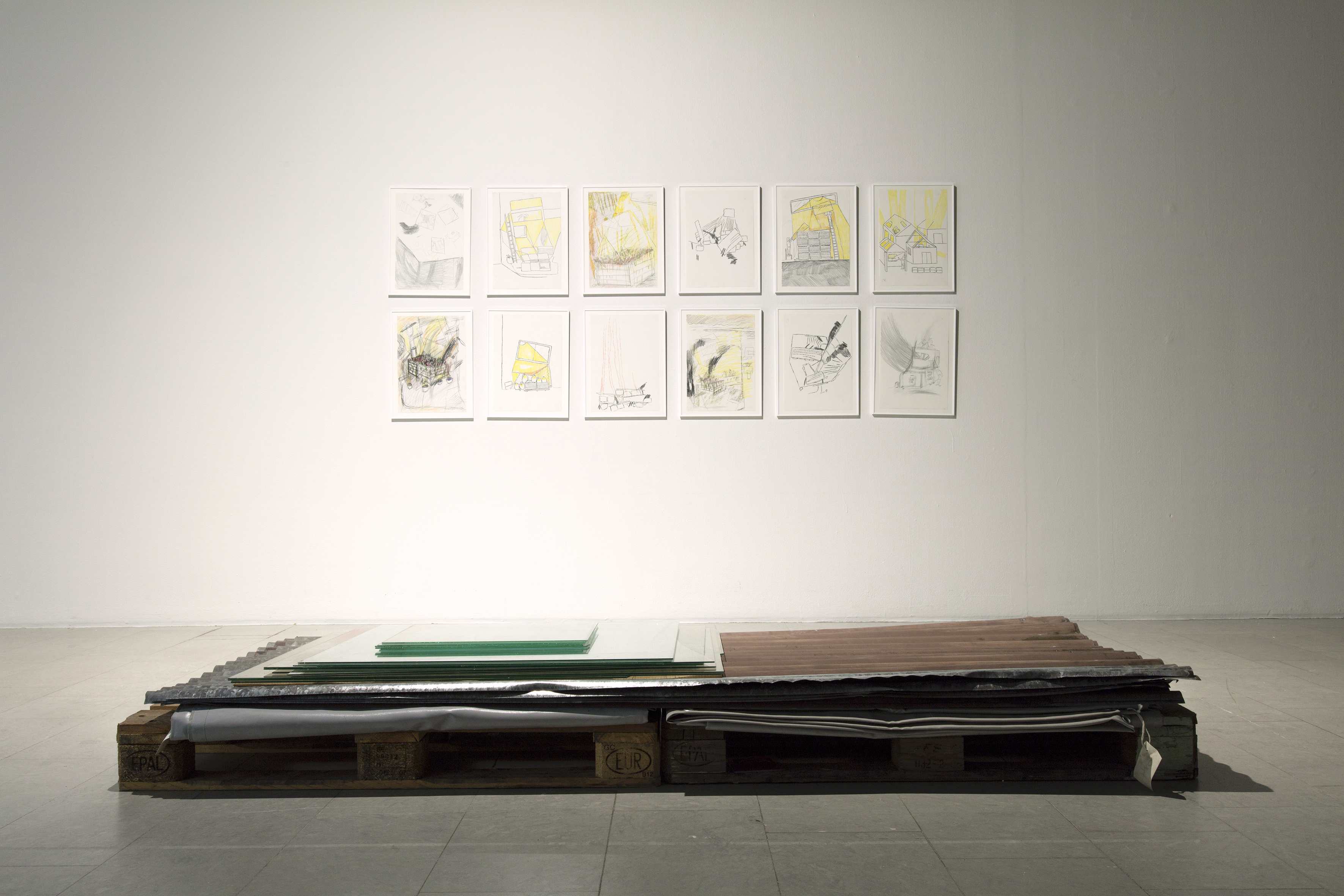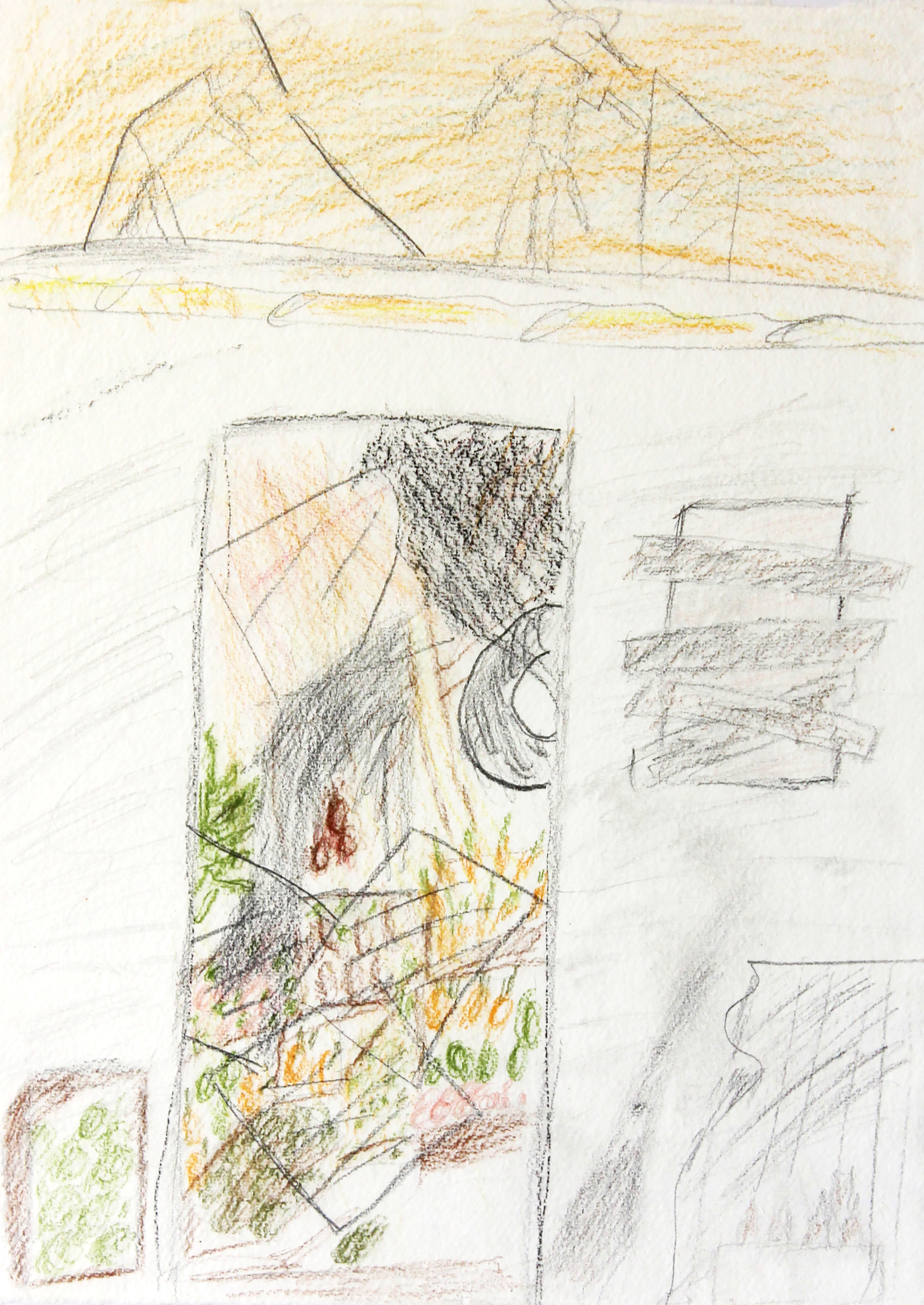Land of Plenty
(2018)
Produced in Cuba
Installation, twelve framed drawings
(A3), set of materials
(aluminium roof tiles, nylon, glass
sheets)
Following the Cuban Revolution agrarian reforms were implemented, giving the Communist state complete control over the administration, production, and distribution of the earth’s riches. Since then, the National Association of Small Farms (ANAP) determines the harvests’ price and has been unjustly rewarding the farmers. Essentially turning them into slaves of their own produce and inefficiently administering the large quantities of produce, resulting in an overall and unnecessary shortage of food in local markets across the country. As a result, some farmers developed a strategy that undermines and silently challenges this authority over their land and labour. They are caught between low wages and an inexisting market. Seeing as the government will pay them a fixed amount regardless of their yield, they prefer to destroy all excess produce than hand it over to the State. Through years of practice, the farmers have created an efficient composting system that turns produce inedible in a matter of days. They use sunlight as their principal ally, direct or redirected and intensified through thick glass sheets installed instead of windows. The nylon-covered bundles of food are distributed within the warehouse, under direct sunlight that floods through the glass and holes pierced in the aluminium rooftop.
In ‘Land of Plenty’ the artist sheds light on this illegal practice by asking the farmers to explain the logistics through notes, drawings or diagrams. Following the farmers’ instructions, the necessary materials including, aluminium roof tiles, glass sheets and fifteen meters of a thick nylon sheet are procured and installed alongside the works on paper. Although the materials and drawings seem quite playful at first glance, they accurately represent the perils of an unjust and dysfunctional public system.
In ‘Land of Plenty’ the artist sheds light on this illegal practice by asking the farmers to explain the logistics through notes, drawings or diagrams. Following the farmers’ instructions, the necessary materials including, aluminium roof tiles, glass sheets and fifteen meters of a thick nylon sheet are procured and installed alongside the works on paper. Although the materials and drawings seem quite playful at first glance, they accurately represent the perils of an unjust and dysfunctional public system.
Photo Credits:
Erkki Valli-Jaakola
© Pori Art Museum, 2020



